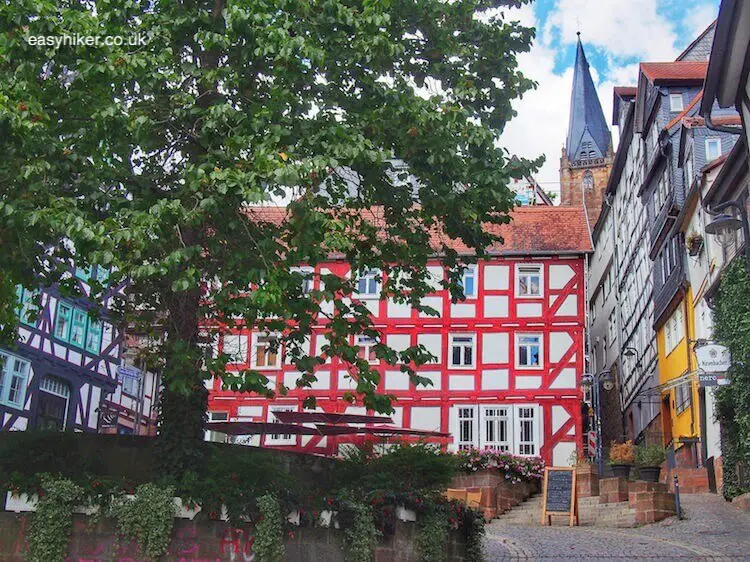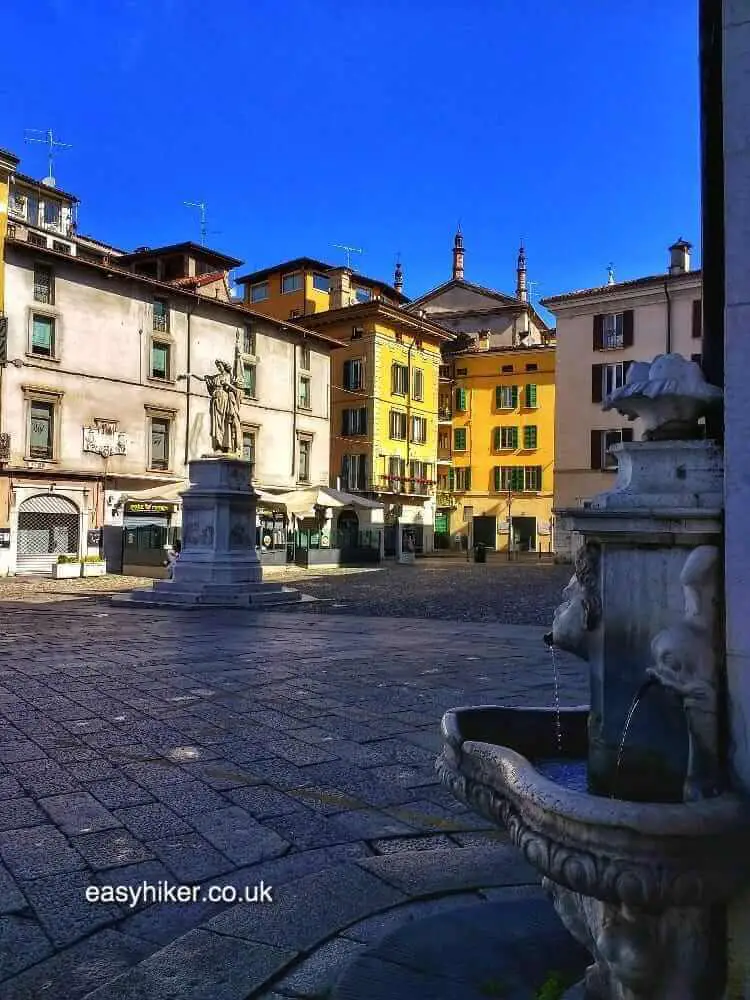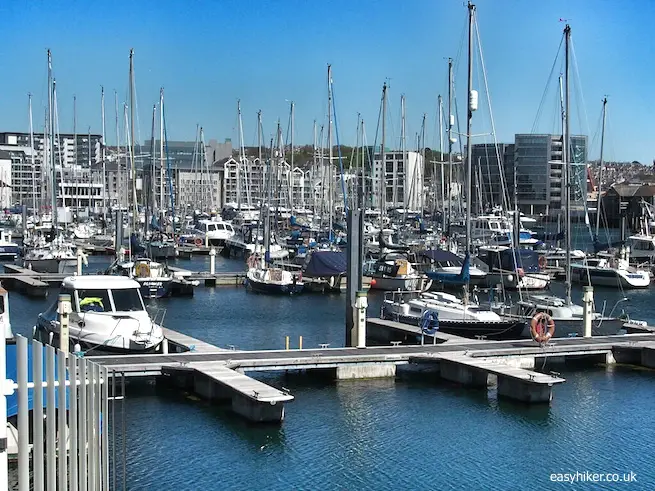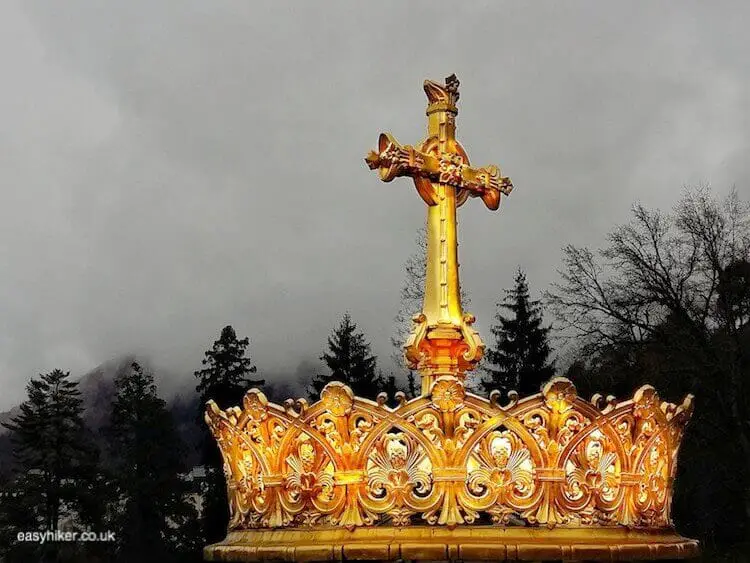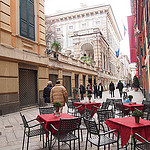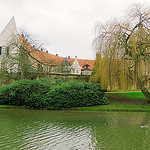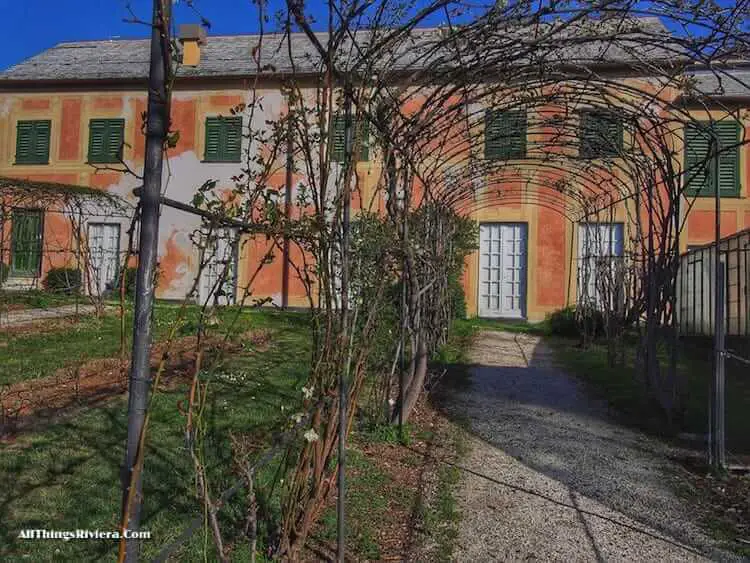Today, we will provide you with more suggestions for easy walks in the Lahn area of central Germany. Towns in this part of the country tend to be small, and their green spaces quickly blend into the surrounding countryside.
Which is why even in town centres, you will never have to look long and hard for an enticing riverbank or foot path that winds into the distance with the promise of an hour-long stroll full of peace and tranquillity.
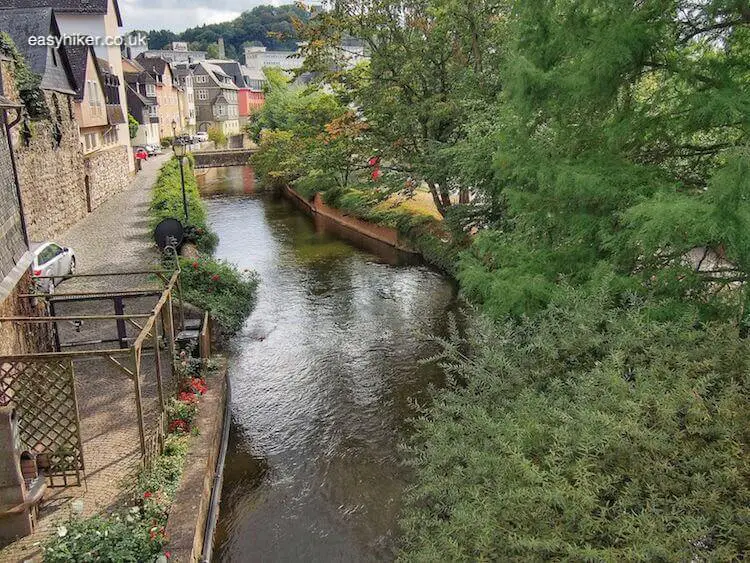
Our City Walks in Wetzlar and Marburg
In Wetzlar, the Goethe Trail is not the only easy hiking show in town: the historic town centre is surrounded by parks, which were originally laid out when the town walls were taken down.
You can easily tour all four of these parks – named after Wetzlar’s international twin cities – in a couple of hours. This is an interesting way of exploring the city …
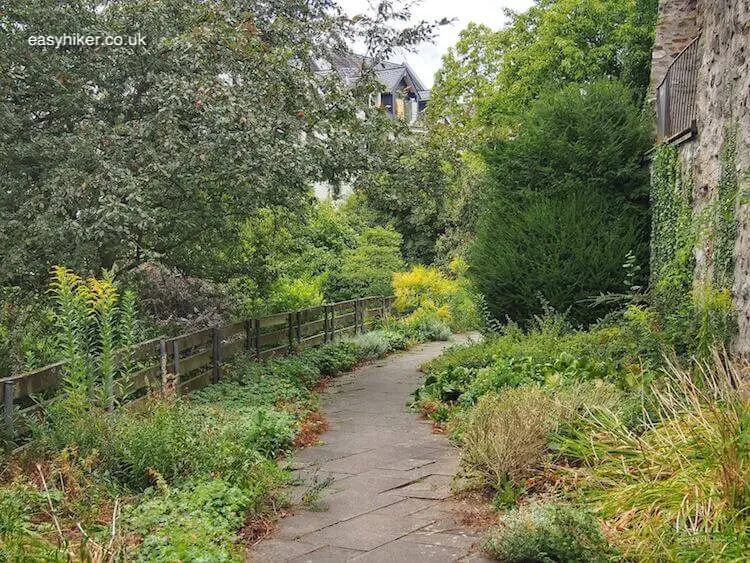
… even though not much is left of the old fortifications.
The most interesting part of this circular walk leads through the Colchester park on the Lahn Island which also features a sculpture garden …
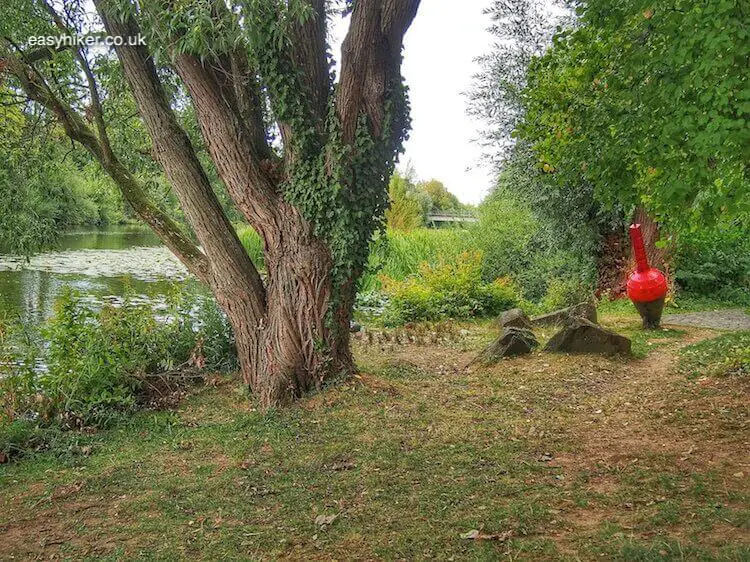
…and the walkable Labyrinth.
If you feel insufficiently challenged by the length of the walk around town, just by following the labyrinth’s route from the centre outward and back, you can add 660 metres to the distance of your walk.
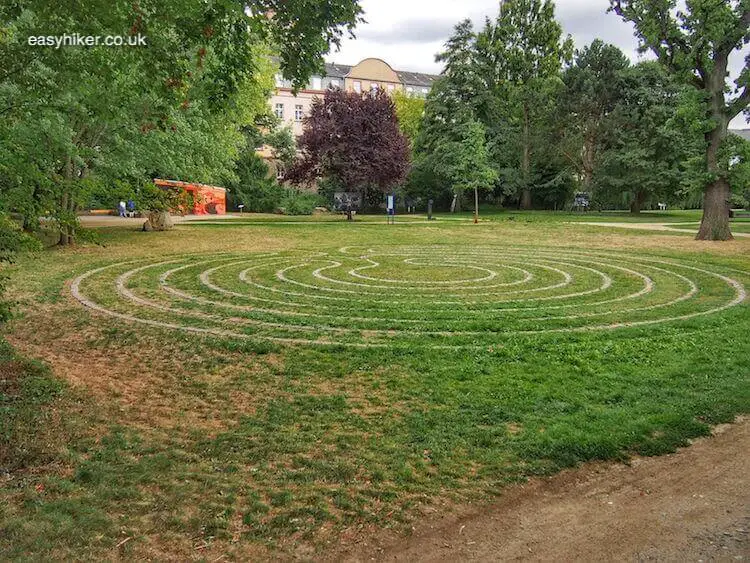
These city walks in Wetzlar and Marburg should not be missed by visitors of the Lahn area.
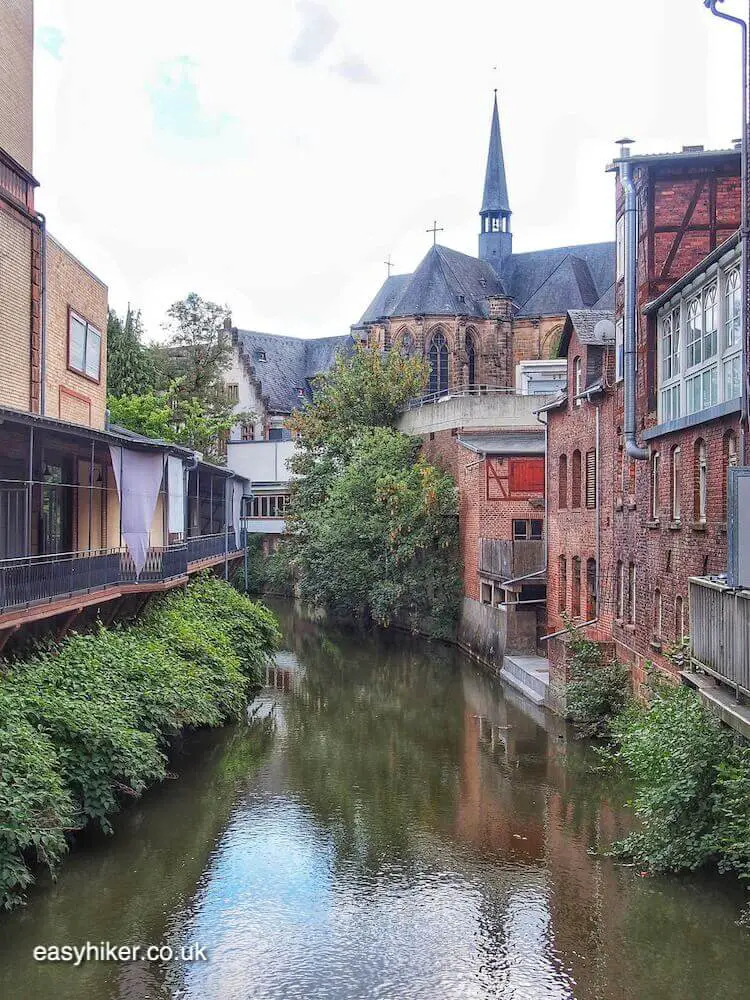
Marburg is the more genteel of the two neighbours (Wetzlar, outside of its historical core, can come across as a little rough) which is probably down to the fact that it is a university town through and through.
Marburg’s Alma Mater Philippina was established in 1527 and is the oldest surviving purpose-built protestant university in the world. Through the centuries, while Marburg’s fortunes went up and down, the university has been the key factor in the city’s economy.
When the city was down on its luck, it was said that the people of Marburg survived by having a student in the attic and two goats in the basement.
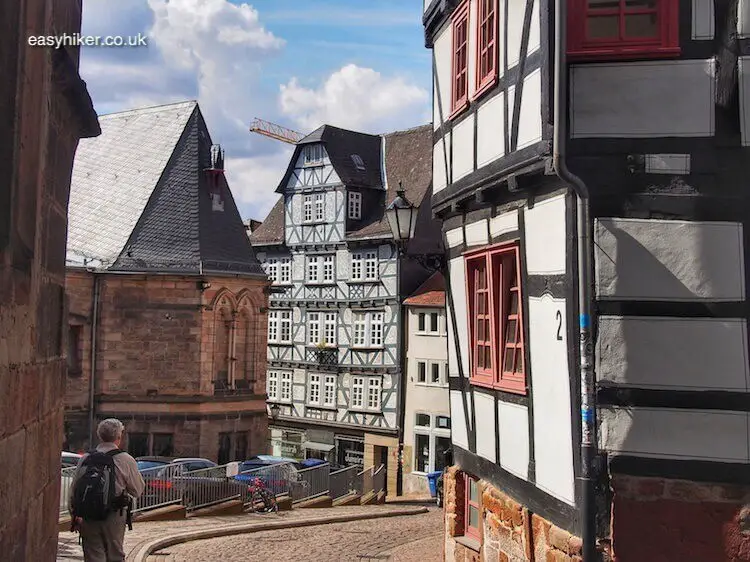
To explore Marburg, we recommend two short walks: firstly, while you are still fresh, take the 20-minute walk up to the Castle.
The route is easy to find. Just follow the markers that will lead you all the way up from Steinweg street between Marburg train station and the town centre: any and all of those trails will take you there.
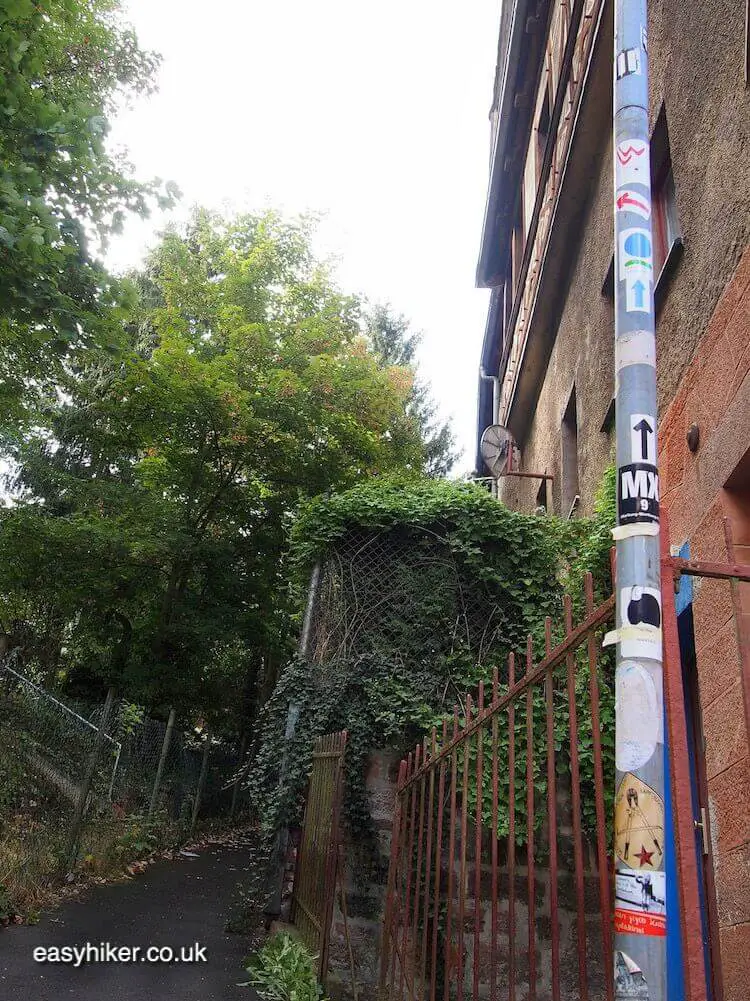
Marburg Castle was built by the local earls from the early Middle Ages onward, but most of what you see today goes back to the late 13th century when the stronghold was converted from a purely military structure to a palatial residence.
Fortifications were added until the 1740s by which time military technology had developed to a point where no fortifications were able to withstand sustained artillery fire, as was soon demonstrated when Napoleon’s army conquered the town in 1807.
The castle was subsequently used as a prison and eventually converted into a museum.
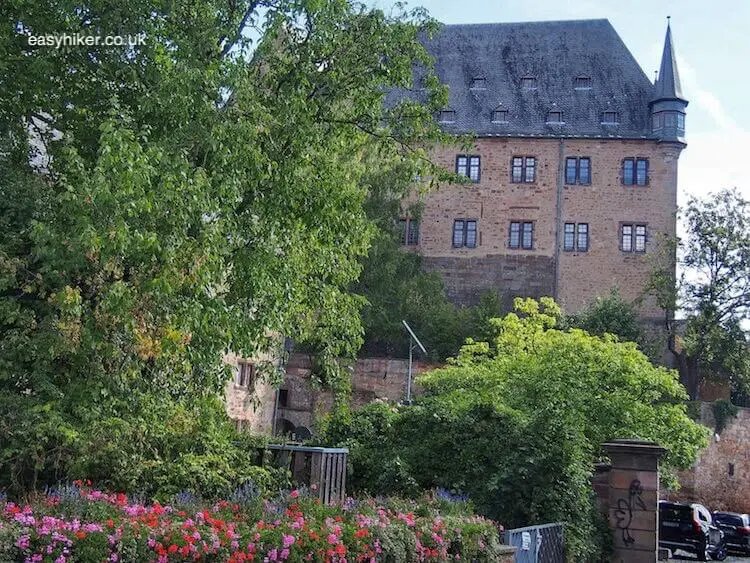
From the castle walls, you also get pretty views across town. The two tall towers downtown belong to the 13th century Saint Elizabeth Church.
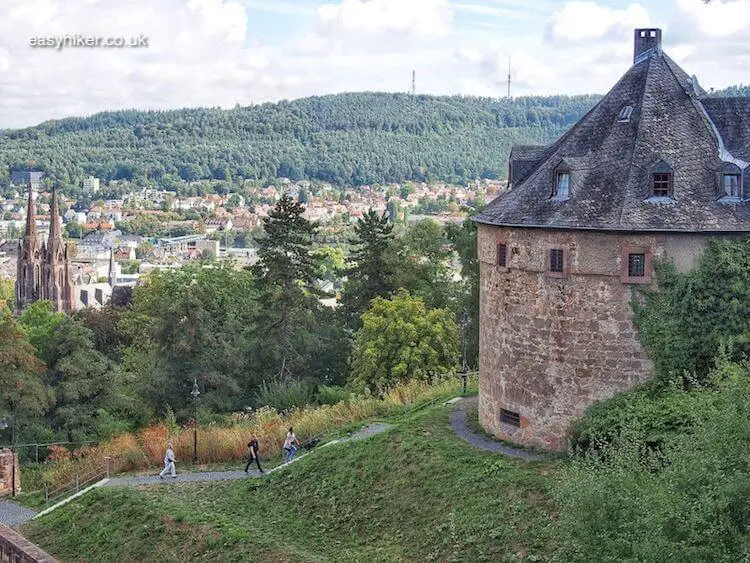
Saint Elizabeth – you may have heard of the Miracle of the Roses – spent the last three years of her short life (she died at the age of 24) in Marburg and was buried there.
Three years after her death, she was declared a saint, and the church that was quickly built in her honour soon became a famous pilgrimage site as well as the powerful engine of the local economy throughout the high Middle Ages.
This source of wealth, however, ran dry when Marburg turned Protestant in the early 16th century.
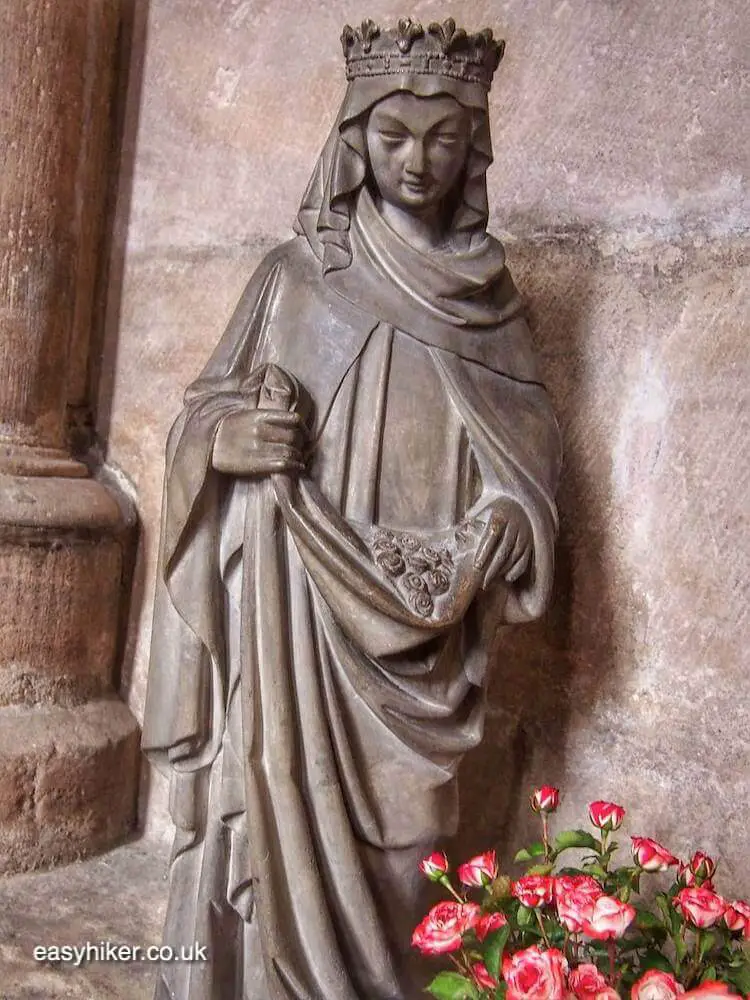
As a quirky way of exploring Marburg itself, we suggest to follow the Brothers Grimm Route, …
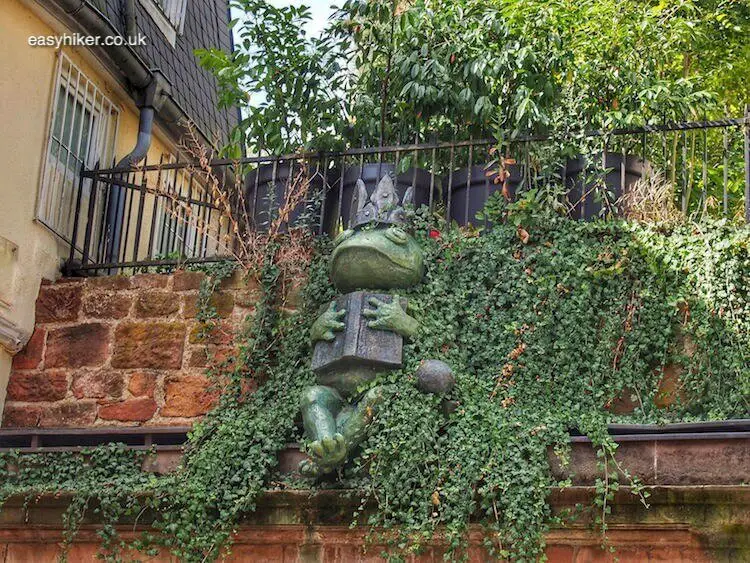
… an urban trail which is dedicated to the fairy tales of those two famous collectors of popular German mythology who lived here for several years in the early 19th century.
Scenes from 16 of the Grimms’ tales have been recreated on house facades and in public gardens all through the town centre.
Marburg’s Oberstadt is one of the best-preserved old towns you can find anywhere in Germany. This is partly down to historical happenstance.
For centuries, Marburg was a nearly forgotten provincial backwater, and princes with delusions of urban grandeur focused their attention elsewhere, leaving Marburg’s medieval streets happily in peace.
But the intact shape of the city’s townscape is also partly down to intelligent planning: after WWII, Marburg was governed by forward-looking, enlightened men who had no ambition to build a “city for the 20th century” out of concrete and asphalt.
Marburg’s urban renewal initiatives were always steeped in tradition and have since won many national as well as international awards.
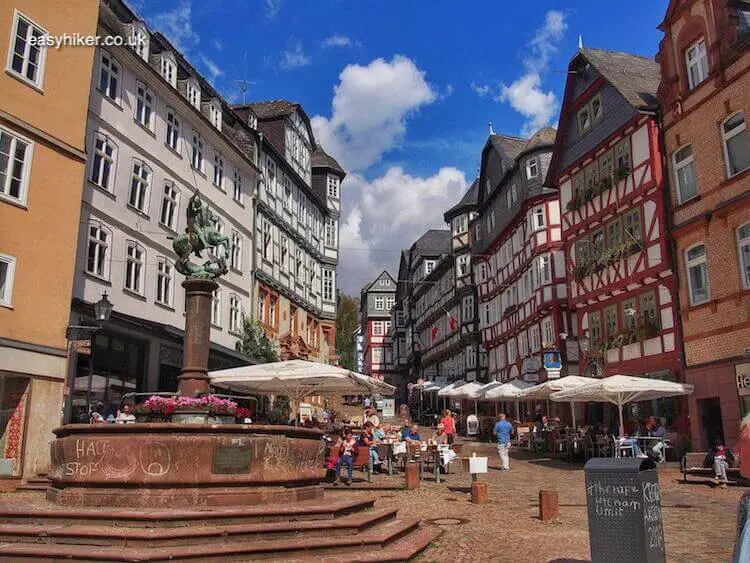
The secret of Marburg’s appeal is its unique blend. Old buildings and young people – roughly one in four inhabitants is a student – make for an attractive mix.
But even the urban fabric itself is not entirely from the Middle Ages: if you look closely, you will find a lot of the 19th century in the city’s streets and thoroughfares.
Marburg is as much Arts and Crafts as it is medieval.
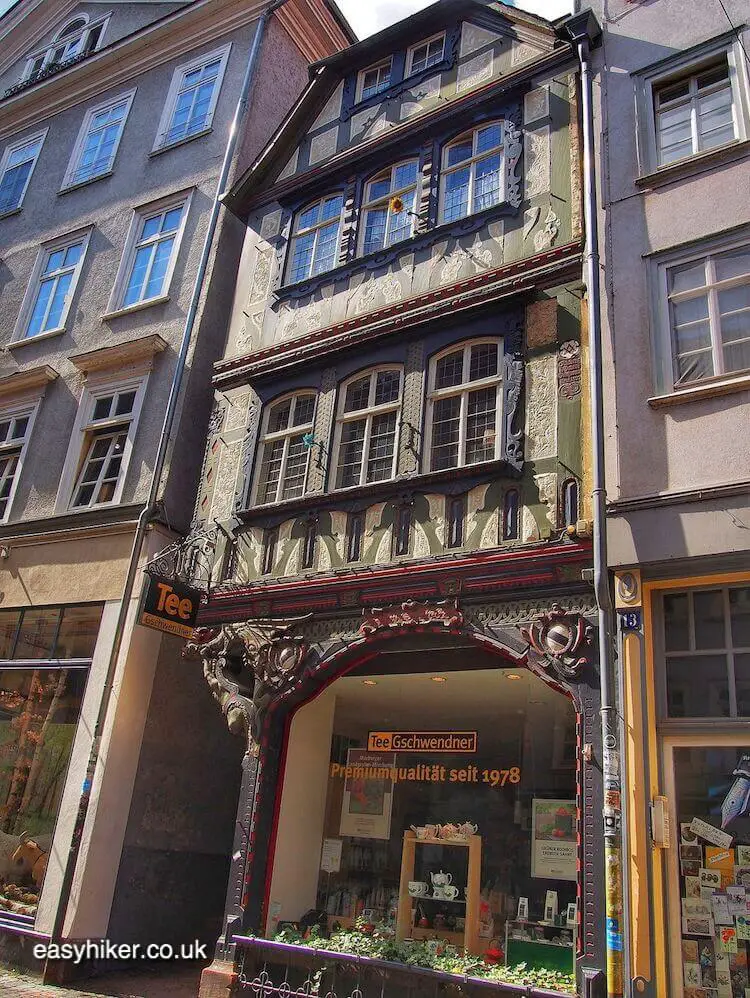
Even many of the newer buildings, meanwhile, proudly display inscriptions that give away their years of construction: which is always a good sign, whether the year in question is 1647 or 1992.
Such inscriptions document the artisans’ pride in their work, their knowledge that their works will outlast them, perhaps for centuries. We are, after all, shaping the world around us not only for ourselves but also for future generations: an awareness for this responsibility is the essence of civilization.
Once we accept that everything will crumble and fall apart within our lifetimes, in 40 or 50 years’ time, we shall be doomed.
